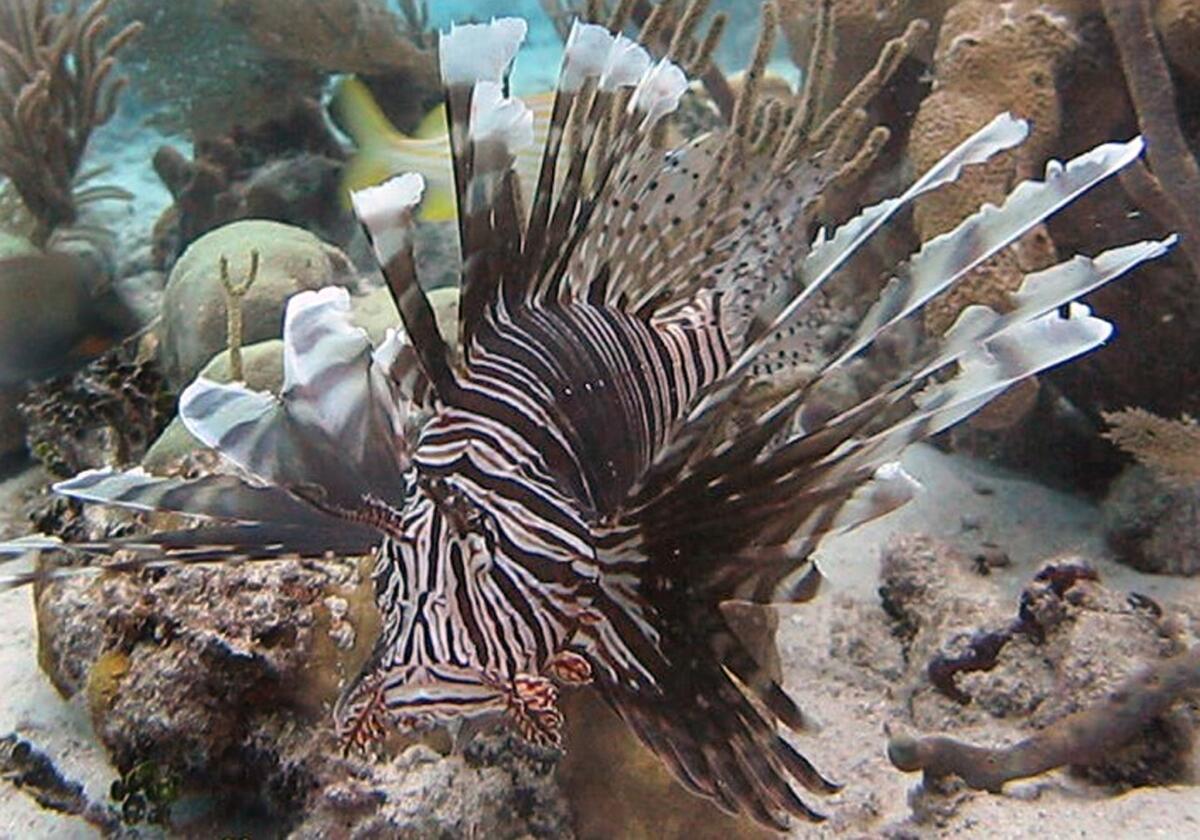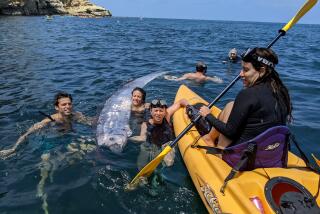Invasive lionfish found at troubling depths off Florida coast

- Share via
FORT LAUDERDALE, Fla. — Aboard the submersible Antipodes, cruising 250 feet beneath the surface off Fort Lauderdale, scientists peered through violet water and saw exactly what they hoped not to see.
About 15 lionfish — venomous, flamboyantly striped invaders from half a world away — swam around the starboard bow of a freighter that was sunk as an artificial reef. When the submersible drifted toward the wreck’s stern, they counted 11 more.
The dive last month was one of a series to gauge the extent of the infestation of the nonnative fish on the region’s reefs, using a vessel donated by OceanGate, which operates submersibles for oil and gas exploration, scientific research, marine engineering and other uses.
Although lionfish are a well-known threat to the region’s reefs, where they consume and compete with native wildlife, most of the knowledge of them comes from observations in shallow water that is accessible to divers. The highly publicized lionfish derbies, in which divers spear and catch them for prizes, can’t reach lionfish this deep, which suggests that controlling them will be much more difficult.
“The big question has always been what are these things doing at depth?” said David Kerstetter, research scientist at Nova Southeastern University’s Oceanographic Center, who was on the recent dive. “Earlier dives this week actually saw that. At the shallower depths, they really didn’t see any lionfish. But what we’re seeing is that at depths beyond that accessible by recreational divers, you’re finding pretty large concentrations of lionfish.”
Native to the Indian and Pacific oceans, lionfish were first reported in Florida in 1985, detected off the coast of Dania Beach. They have since been found throughout the gulf and up the Atlantic coast. Typically growing about a foot long, they have venomous, needle-like spines for defense, which can cause painful stings that are fatal on rare occasions.
During its dives, the Antipodes cruised at a depth of about 100 feet and then went down to 265 feet, finding few lionfish at shallow depths and many at greater depths.
“We knew that they were occasionally found deep,” Kerstetter said. “Now we’re seeing a lot more evidence that they’re actually common at depth. They’re always going to have this refuge, where they can eat and spawn and do all these other things that lionfish do.”
Keith Mille, an environmental specialist with the Florida Fish and Wildlife Conservation Commission who went on the dive last month, said the abundance of lionfish in deep water indicated that current control efforts can’t reach a significant population of the fish.
“I feel that we were looking at a lionfish population that is not influenced by dive removal efforts,” he said.
So do we have any options for dealing with lionfish in 250 feet of water or deeper?
“Really, no,” Kerstetter said.
More to Read
Sign up for Essential California
The most important California stories and recommendations in your inbox every morning.
You may occasionally receive promotional content from the Los Angeles Times.













